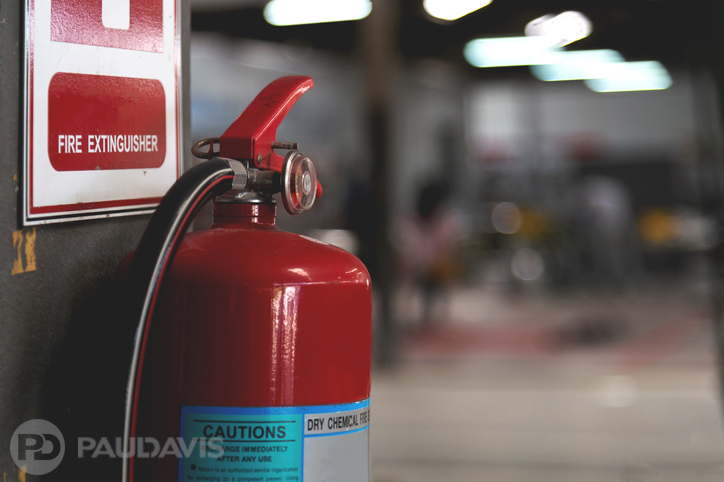
The April 15-16, 2019 devastating fire that ravaged France’s national treasure Notre Dame started like many fires do: with a stray cigarette or electrical spark that could have been easily extinguished if caught early. Vigilance is one key to avoiding disasters like this one. The inspector, climbing steep steps at the end of a long day to investigate a tripped smoke alarm, should have looked harder for the cause. Another key to saving lives and buildings: portable fire extinguishers.
Surprisingly, it’s not a certainty that tinder-dry Notre Dame had fire extinguishers at the ready. These life-saving devices remain, however, the first line of defence for any building. Safety-conscious employers and property owners work with local emergency responders and fire safety officers to determine appropriate types for each location and structure use. The five types, designated Class A through Class K, extinguish different types of materials. Class A extinguishers fight wood, paper and textile fires and are ideal for offices, for example. Class D types quench burning metal powder and shavings in machine shops or industrial areas. Every commercial and restaurant kitchen features Class K models for the best protection.
Fire safety pros also help place the extinguishers for optimal coverage of the space. Class K types, which combat hotter fires fueled by more flammable materials, are typically installed much closer together than Class A extinguishers. Wherever they are located, the extinguishers must be securely mounted and easily accessible at all times. Further, building occupants should be trained and drilled in their use.
“Fire extinguishers require regular attention and proper record-keeping to ensure they are always at the ready,” says Bruce Powell, Health and Safety Officer at Paul Davis. “Unfortunately, too many building owners and operators ‘set it and forget it’ when it comes to these vital devices.” The Occupational Health and Safety Administration specifies that employers visually inspect extinguishers monthly, maintain them yearly, and perform specialized testing every five to 12 years depending on type. The most common problems they encounter, fire safety inspectors report, include improper storage, lax maintenance, poor recordkeeping, and lack of employee training.
For building owners confronting a small flame that could quickly become a raging conflagration, fire extinguishers are an absolutely essential protective device. Make sure yours are of the right type, installed correctly, inspected and easily accessible to occupants who know exactly how to deploy them.
If, despite your best efforts, fire damages your commercial structure, Paul Davis is just a phone call away 234/7/365 and will be onsite within four hours of a call for help.
